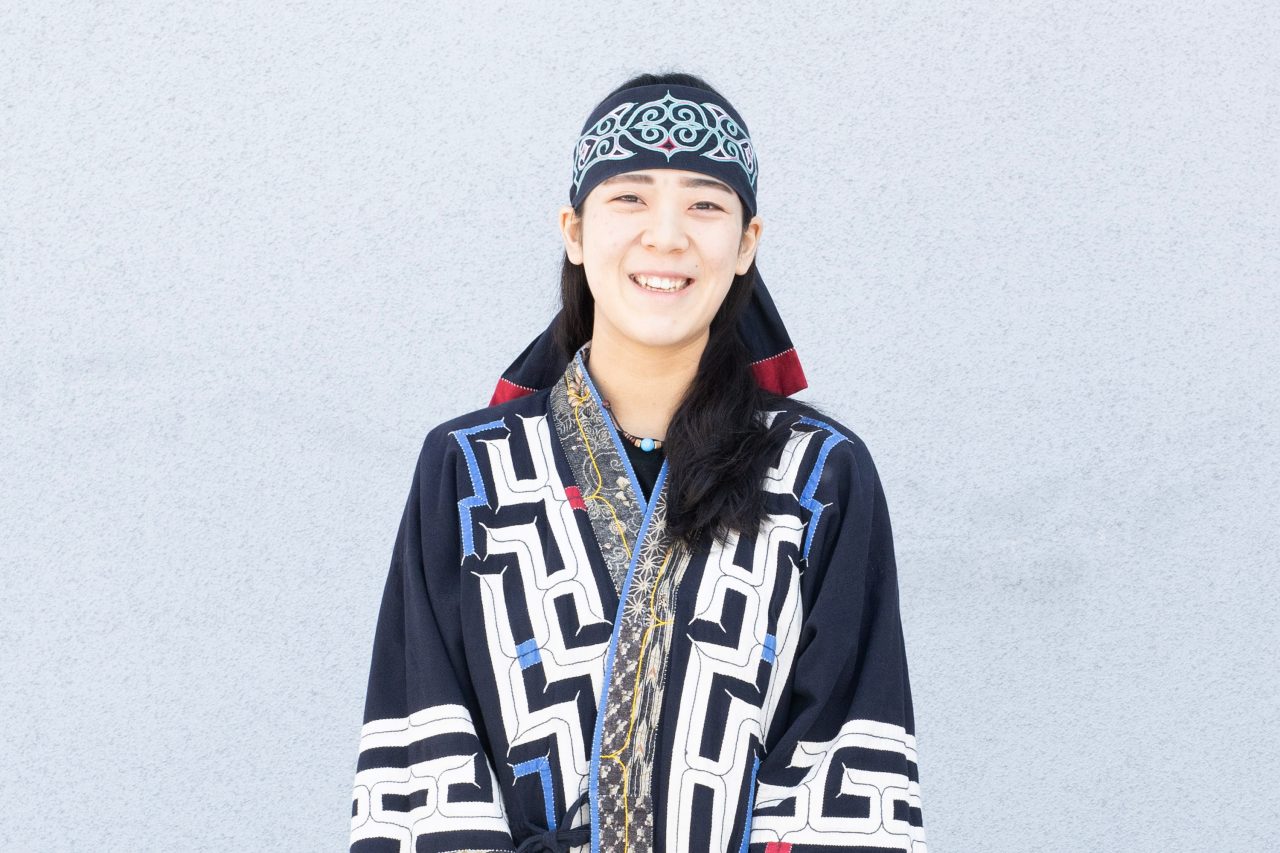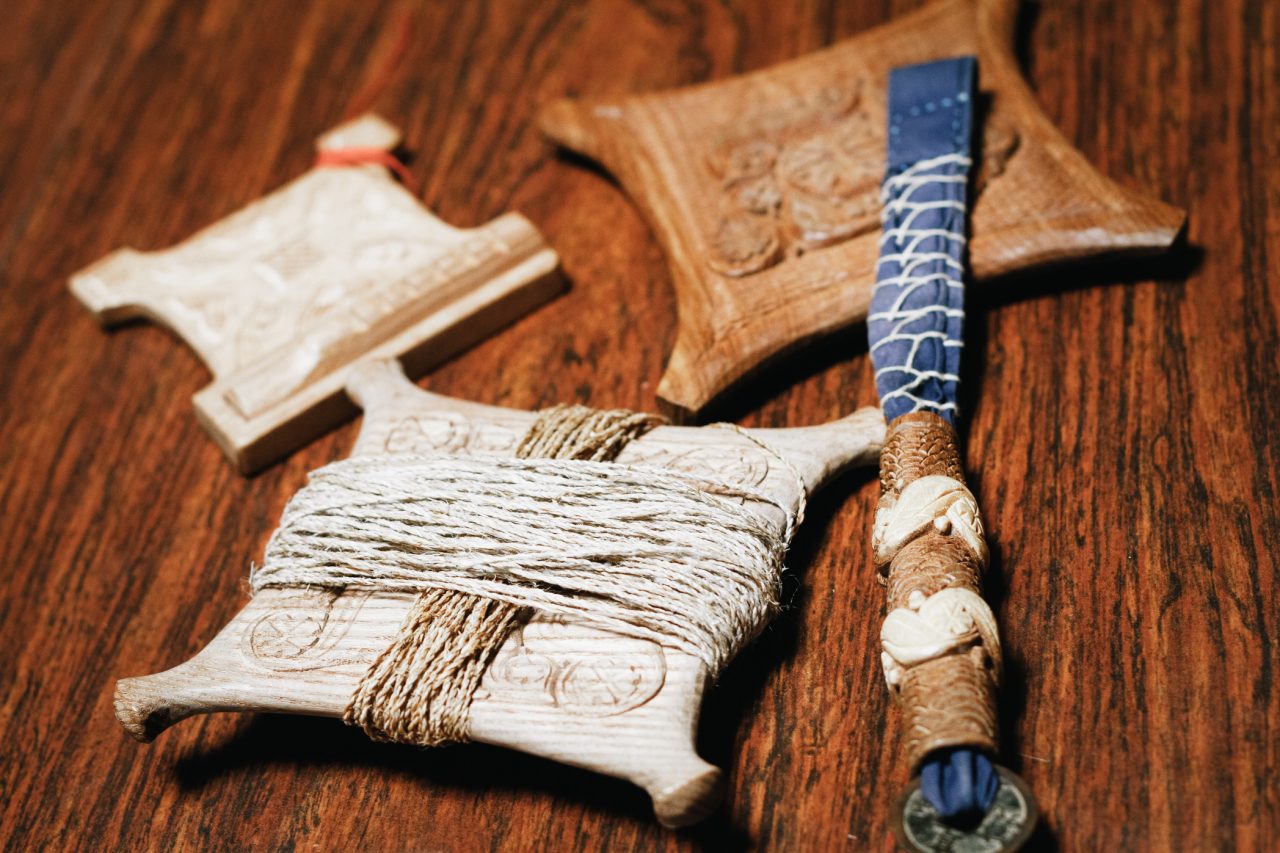Lake Akan Ainu Theater Ikor Dancer
Chika Nishiyama
Her mother was a pupil of Kayoko Nishida, the leading expert in Ainu embroidery. This inspired her to learn about Ainu embroidery and traditional dance herself. She currently helps Kayoko as an assistant in her embroidery workshops and events.

A constant yearning for old things and Ainu culture
Chika has always had a fancy for old and historical things. She was also interested in Ainu culture, but did not have many opportunities to experience it. This all changed after her mother joined an Ainu embroidery class in Abashiri City, paving the way for her to build a relationship with the famous embroidery artisan Kayoko Nishida.
One day, during a visit to observe the class, Chika was invited by Kayoko to learn about Ainu embroidery and traditional dance, and she decided to join her embroidery lessons in the Lake Akan Ainu Kotan. She was surprised to find out that her first project was to make her own Ainu kimono, but seeing that it was the same for every participant, she decided to take on the challenge. Chika admits that embroidery has its difficulties, but she finds it delightful to see it come into shape.
Being of Ainu lineage herself, Chika strongly feels that her meeting with Kayoko was a mysterious work of fate.

The embroidery tools of the Ainu
n Ainu society, embroidery is considered to be the work of women, but men are the ones who carve the patterns on their wooden spools. These patterns have an intricate beauty that captivates your heart.
Ainu women usually carry a needle case called “cispo”, wrapping it in embroidered cloth and hanging it around their necks. It is usually weighted at the end with an old coin. Ainu women treasured their needles more than money. Legend has it that if an Ainu woman ever lost even one of her needles, she would scream so loud that everyone nearby would come running to help.
Embroidery is used to apply Ainu patterns on clothing used in rituals and other sacred occasions. When the Ainu kneel during a ritual, they lift the hems of their robes so as not to conceal the patterns underneath. This is how much they revere embroidery as a hallowed handiwork, which is why they also safeguard the tools used to create them.

The feeling behind the culture and techniques
Chika appreciates how Kayoko-sensei tells her different things about the Ainu while teaching her embroidery. One of the things she looks forward to is learning to do “kaeka”, the traditional Ainu way of spinning thread.
Kaeka is a tedious process that requires patience. It involves creating thread by taking the bark of lobed elm, mukago-irakusa, or other plants, soaking it in the snow, letting it dry, then extracting the fibers. The fibers are then spun into thread and twined around a wooden spool, ready to be used for embroidery. The thickness and texture of the thread varies depending on the plant used and the spinning technique.
Chika wants to learn the techniques as well as the spirituality behind the process. Her sincere curiosity and passion for learning bring much hope for the future of this art.



